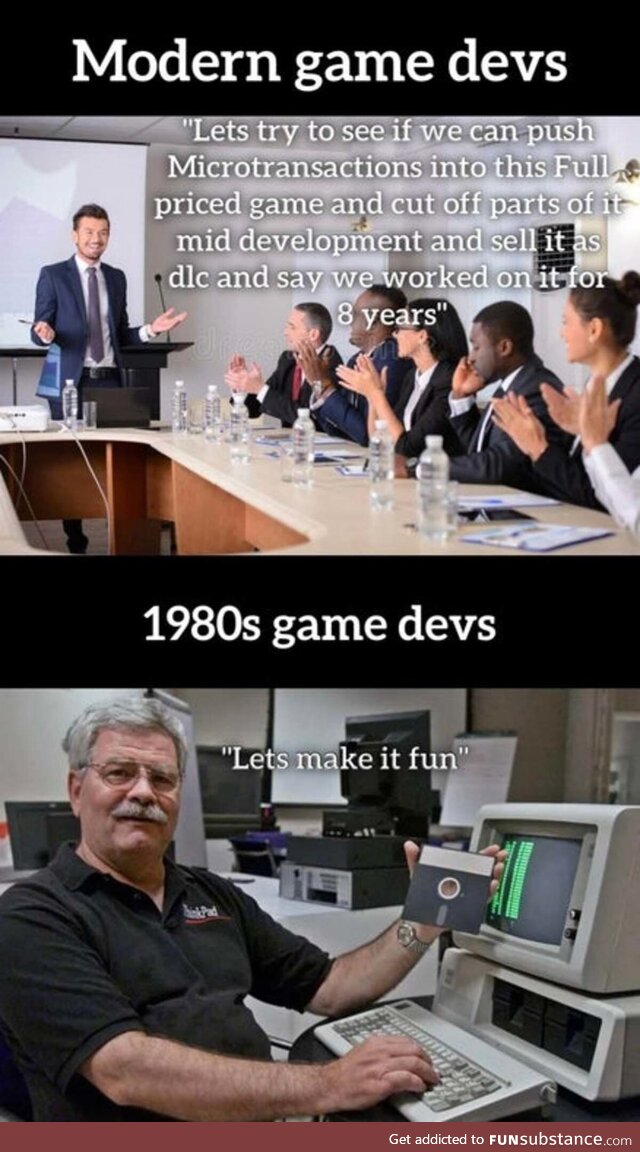Featured Posts

I wish I had a fort

The powerof positive thinking

NASA

Pray for Australia

Take care of each other

She has emerged

My soul feels so much better

I just ordered one. #Just2019HispanicThings

He really wanted his photo at the Halloween party, but was super scared of the spiders

The Only Thing More Contagious Than COVID19 Might Be This Fox's Smile
About
FAQ
Contact
Rules
Terms
Privacy
Feedback
Keyboard Shortcuts:
Previous Post · Next Post · + CTRL Skip Post
Previous Post · Next Post · + CTRL Skip Post
© 2026 FunSubstance · funny and entertaining pictures, memes, gifs & videos.



Micro transactions were king through most of the 1980’s. The “Nintendo revolution” didn’t make consoles a fixture of almost every home until the mid 80’s- but even then the arcade was king. Console games started largely as arcade ports because arcade games had brand recognition and the work was already done. The model for the most part was to release the game as a dual release or prioritize arcade and port to console at launch or later on. Arcades tended to be where games were tested and home systems were both a way to have a mini arcade experience at home- but also to practice your arcade skills.
Games were also expensive and not only were there far fewer than the modern day but it wasn’t really common for people to own as many games as today on average. Hard to beat games were often thought to appear as a better value to consumers in the home market. An early form of padding. Today we have fetch quests and such but back then, they just made sections or entire games brutally difficult to the point you couldn’t even beat the first level sometimes. This way a game that could easily have a 30 minute play through at best could last hundreds of hours at a time that graphic games were too large to really make “honest” games of that scope.
It also is especially unfair to players without the money to spend even if they wanted to.
Of course by the same token- as someone who likes games but has a very full life and a career to demand my time, I don’t have weeks to spend staying up all night to grind gold and levels and to get that epic rare drop for the set I need. Given the choice to basically be eternally at noob levels or not play at all- I’d sooner not play. For many people and by design many games aren’t for casuals. The fun parts of the game are all about having the skills and levels to where things get exciting and playing